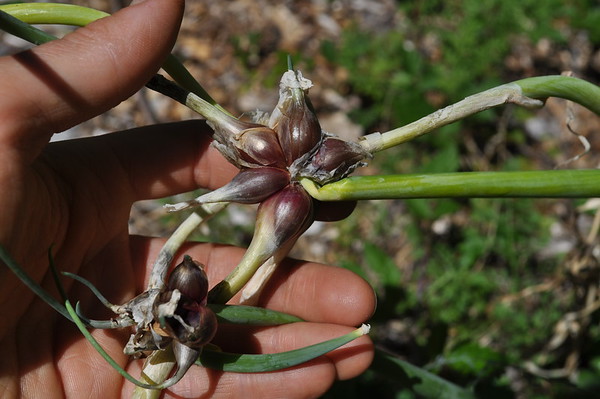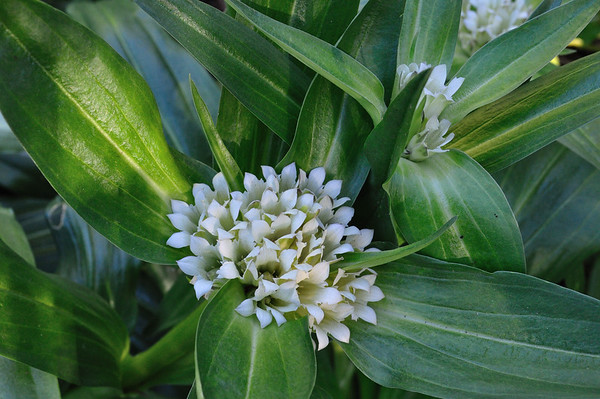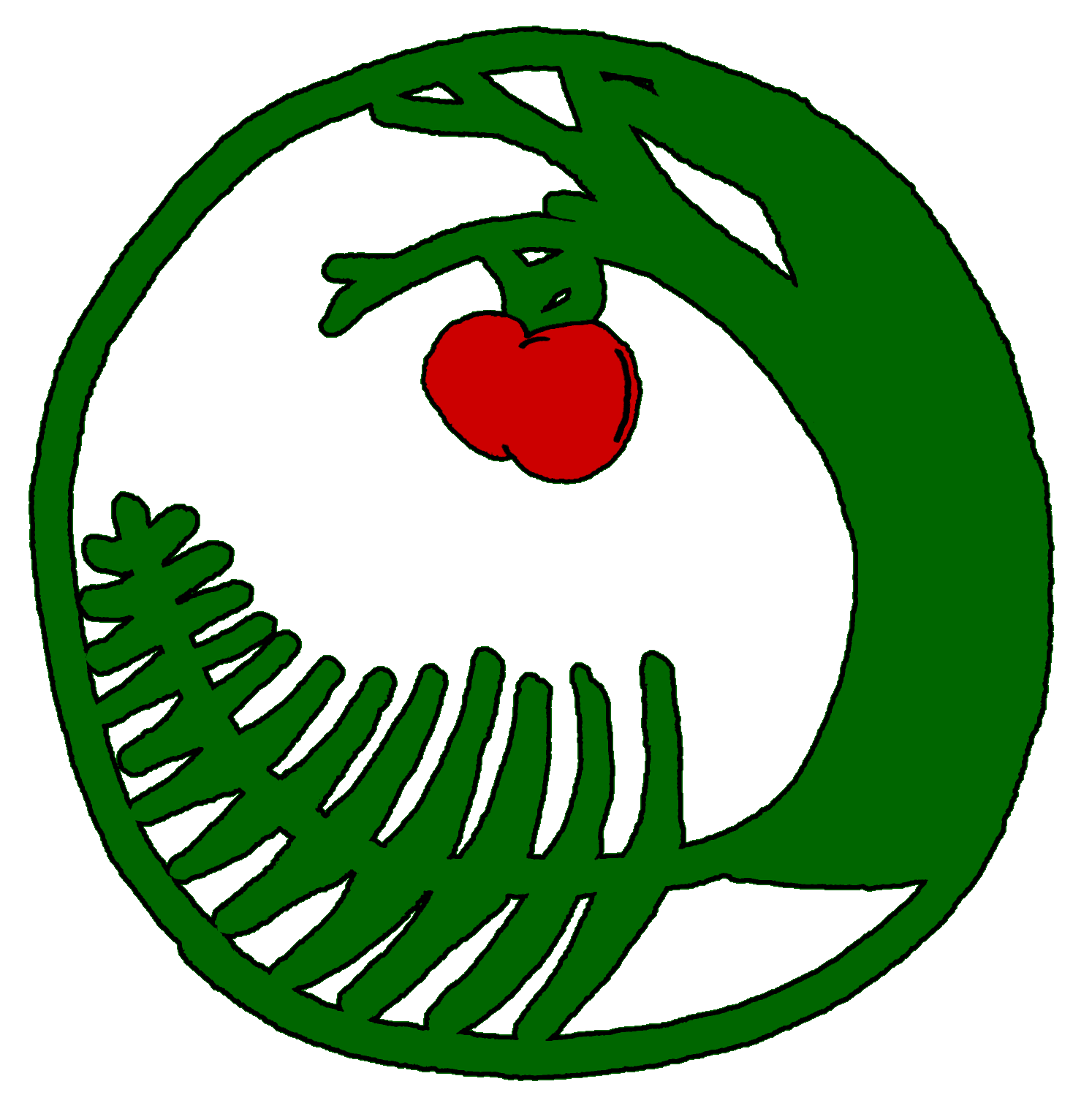Akebia is a twining deciduous woody fruiting vine. Unlike many fruiting vines, it is shade tolerant. Leaves are somewhat evergreen and young leaves may have a purplish hue. Vines can grow 20 to... more->
Fern Hill Nursery and Botanical Sanctuary
Edible, medicinal, and native plants for the Pacific Northwest
We spent 13 years building an abundant fruit forest, annual veggie beds, perennial medicinal herbs, and a healthy mixed hardwood-coniferous forest and now we've sold our property to the next stewards so that we can begin a new homesteading project in Vermont closer to our best friends and their kids.
Don't worry - we plan to keep this website up and running so that our customers can reference what we've written about our plants!
We'll let you know once we re-start a farm in Vermont!
Sold out

Blue blossom, also known as California lilac, is a fabulous showy broadleaf evergreen shrub. Lilac colored flowers bloom in mid to late spring and have a wonderful fragrance. Native to coastal... more->

This perennial produces gorgeous purple flowering stalks in full sun or part shade. A Willamette Valley native, it tolerates drought and poor soil with root nodules that fix nitrogen. Deer... more->
Blackcap raspberry is one of the most delicious native fruits in our area. It is also not well know because it is not as common as the wild blackberries. The blackcap is a cane fruit that grows... more->

Although some know it as California ginseng, elk clover, or spikenard, I think Oregon ginseng is quite fitting for a plant that inhabits shady, moist seasonal creeks in deep coniferous forests as... more->
We have grown this early fruiting variety for many years with success. We harvest lots of large sweet fruits starting in late May until near the end of June. Its easy to grow and prefers full... more->
Kalitera means "the finest" in Greek, and this oregano lives up to its name. It has a smooth flavor like marjoram without the spicy bitterness found in seed-grown oregano. It grows upright on... more->

Native to sunny meadows and dappled shade of open woodlands in the Willamette Valley, meadow checkermallow created a gorgeous display of light pink blossoms up to 6 feet tall. In the shade it may... more->
This native member of the sunflower family spreads quickly in poor soil with very little care and without summer irrigation. It has spreading blue-flowered aster blossoms late in the summer to... more->
'Grosso' is a hybrid Lavindin-type variety that has a dark purple bloom, grey-green leaves, and excellent fragrance fresh or dried. This variety is often used for commercial production because of... more->

This prickly and upright gooseberry shrub is native to California and Oregon. It produces profusions of intricate red and white flowers that look like they are turned inside out. If you are... more->

One of the first flowers to bloom in spring, purple sweet violet flowers bring a subtle and sweet aroma to the garden as it wakes from slumber. With edible and fragrant flowers as well as edible... more->

A lower growing clumping herbaceous perennial from Europe, lady’s mantle has attractive gray-green foliage and delicate yellow flower stalks that can be cut fresh and dried. This plant prefers... more->

We relish the soft, living, green carpets made of this fragrant and healing herb. This perennial chamomile stitches together into a mat a few inches tall that emits the sweetest apple scent when... more->
Edible flowers and leaves make muskmallow a great perennial for a sunny garden. It starts growing in early spring and blooms a deep pink in late spring through summer. Our plants bloom profusely... more->
Native to the Pacific Northwest, thimbleberries produce delicate, thimble shaped raspberry-like fruit atop canes up to 5 feet tall. The pretty white flowers in spring brighten up shady corners of... more->
A broad leaf evergreen ground cover, kinnikinnick is very hardy. It thrives in partial shade and will spread along the ground or grow along a slope, providing some erosion control. Drought... more->
Salal is an evergreen shrub in the heath family with glossy leaves, white urn-shaped flowers, and edible purple berries. Salal prefers moist shade, but it often bears the most fruit in sunny... more->


A beautiful shade-tolerant ground cover, the native Oregon wood sorrel spreads happily on the forest floor, or a shady garden floor. It likes lots of organic matter and shade. If it does not... more->

We love this late spring blooming native wildflower that we often find on the edges of meadows. In the hollyhock family, this perennial grows only about a foot to two feet tall at most. It sends... more->

Saltbush is a wonderful choice for year-round edible raw greens. This shrub is semi-evergreen and will provide mildly salty spinach flavored leaves throughout the year. Some cold years, it can... more->
'Vera' is a cold-hardy heirloom English lavender. It is considered the original and true variety traditionally grown at high elevation in the French alps. In our garden, 'Vera' produces tall... more->

European black currants have a very distinct musky flavor which is prized by many in Europe and the U.S. We love these fruit and make a honey and currant jam that our toddler eats by the spoonful... more->

Grapes are very easy to grow and maintain and never fail to produce abundant crops. This table grape is seedless and dark purple with small to medium sized fruits in nicely shaped clusters. This... more->

This onion has the funny habit of creating bulbs atop its flowering scapes that grow so big and heavy that the stems bend down and plant the bulblets in the soil about a foot away from the mother... more->

With beautiful blue flowers clustered atop two foot tall stalks, hound's tongue is named for the shape and texture of the leaves that form a rosette at the base of the plant. It's native to the... more->
While you can find dozens of varieties of mint for your garden, we focus on cultivating peppermint because it is the best mint for soothing upset stomachs, relieving headaches, and cooling... more->

A rudbeckia native to Oregon, this wildflower has a unique bloom that resembles Echinacea or Rdbeckia but with no petals. A perennial plant, when grown in full sun and garden soil, flower stalks... more->

This arnica is native to western North America and is as potent as Arnica montana. It is a low growing, slowly spreading herbaceous perennial that prefers full sun to part shade and... more->

Native to the hills of western China and Tibet, this medicinal perennial likes rich, moist soil and sun. In mid-summer, it grows up to 2 feet tall with showy white blossoms. While so many... more->


Fabulous flowers on this semi-evergreen vine. The complex blue flowers bloom mid summer to fall. This vine is reasonably hardy and can grow a lot in one season. During cold winters it may die... more->

A small but beautiful perennial native wildflower that prefers moist soil and sun, blue eyed grass grows less than a foot tall and makes clusters of small purple flowers in early summer. A great... more->

Christmas bush is a great choice for evergreen ground cover on rock walls or slopes or ornamental gardens. The branches are dense and compact, creating a mat of tiny leaves about 6 inches tall... more->
Lovage is an excellent addition to a perennial vegetable garden. Bursting forth in spring, this plant can shoot up to six or seven feet tall each year. The aromatic leaves have a flavor similar to... more->
This currant has smooth, lobed leaves and berries that have spicy and gingery tones that ride on top of the sweet and sour currant flavor. It's yellow flowers brighten the garden in late spring... more->

A sunflower-like native wildflower, narrow leaved mule's ears grows in grasslands and meadows in the fields and foot hills of the Willamette Valley. It is an herbaceous perennial and each year... more->

Nodding onion is a showy native onion that is also a great addition to a perennial vegetable garden. The grass-like leaves can be harvested any time and eaten raw like chives or cooked as green... more->


A perennial vine with elegant glossy leaves, Chinese mountain yam can grow up to 15 feet tall each season. It blooms in late summer and produces underground potato-flavored edible tubers which... more->

This variety produces 3-foot tall displays of crimson red inflorescences composed of tubular flowers. It is a sight to see! A favorite for hummingbirds. more->

We rely on garden sorrel greens in January and February. Before any other outdoor crop is ready to harvest, garden sorrel is up and abundant! You'll be glad you put some sorrel in the ground... more->

Viking has been selected for delicious flavor raw and cooked. Some seedlings can be extremely astringent but this one will just give you a little pucker. more->

A beautiful perennial native to Oregon, Oregon geranium is very showy. Growing about a foot in height and wide, it has profuse pink blooms in late spring and early summer. It thrives in full sun... more->
The maypop is a perennial passionflower in our climate. The plant dies back each year to the ground and re-sprouts in late spring. Less vigorous than P. caerulea, this species has a... more->

English Tabor thyme has wide leaves that are the most broad, green, and juicy of any thyme we've grown. Whereas other varieties are often quite spicy and pungent, this thyme is mild tasting but... more->
Coyote brush is an evergreen shrub native to Oregon. It is drought tolerant, deer tolerant, and easy to grow. Fast growing, it can grow as high as nine feet but usually is shorter. It responds... more->


This is a special and very ornamental deciduous shrub. Bright green branches and stalks display elegant clusters of dark brown berry clusters. When ripe, these berries taste like chocolate. ... more->

This is one of the earliest blooming and showiest shrubs in the Pacific Northwest! Red flowering currant is a very popular plant for a variety of reasons. The large clusters of pink-red flowers... more->
This purple and white onion grows round bulbs in clusters that are firm, crisp, and have delicious savory flavor. more->

This wild variety of beebalm produces showy light pink flower clusters on two foot tall stems. more->
